Eumorpha typhon
|
|
Updated as per personal communication with Derek Bridgehouse, (Huntsville, Madison County, Alabama, July 3, 2009); October 31, 2010
|
Eumorpha typhon
you-MOR-fuhMTYE-fun
(Klug, 1836)
Sphinx
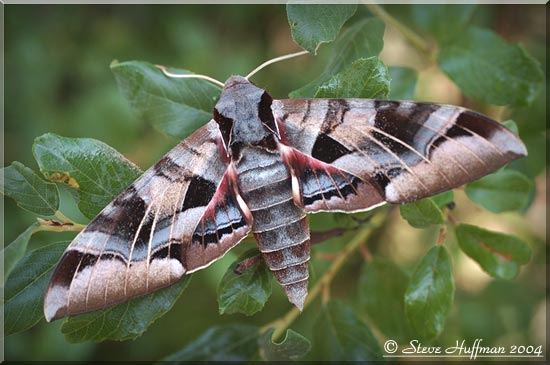
Eumorpha typhon
southeast Arizona, courtesy of Steve Huffman.
This site has been created by
Bill Oehlke
Comments, suggestions and/or additional information are welcomed by Bill.
| TAXONOMY:
Superfamily: Sphingoidea, Dyar, 1902
Family: Sphingidae, Latreille, 1802
Subfamily: Macroglossinae, Harris, 1839
Tribe: Philampelini, Burmeister
Genus: Eumorpha, Hubner, [1807]
Species: typhon, (Klug, 1836) |
DISTRIBUTION:
The Typhon Sphinx Moth,
Eumorpha typhon (forewing length: 2 1/4 - 2 1/2 inches //
53-59mm) flies in
??Honduras ?? north through
Mexico to
southern Arizona and New Mexico. Derek Bridgehouse reports a specimen taken in Huntsville, Madison County, northern Alabama, July 3, 2009.
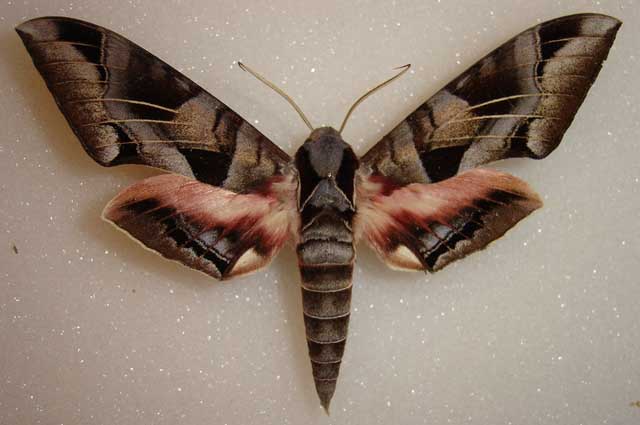
Eumorpha typhon, Huntsville, Madison County, Alabama,
July 3, 2009, courtesy of Derek Bridgehouse.
The northern Alabama presence (probably as a rare stray) is a big surprise.
Will Prescott sends the following image from Mexico:
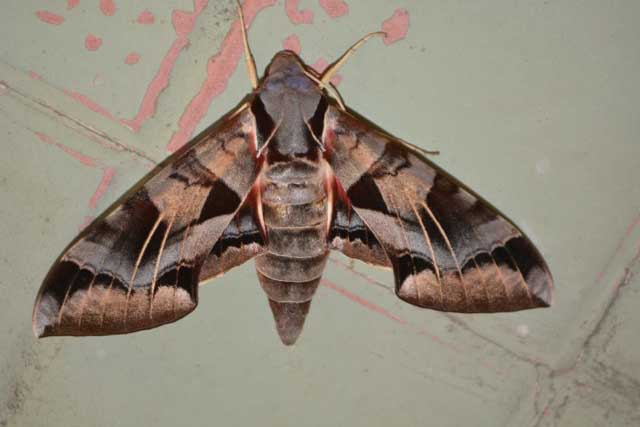
Eumorpha typhon, Guadalajara, Mexico,
June 13, 2014, courtesy of
Will Prescott.
The upperside of wings is deep red-brown with pale brown bands. Each hindwing has pink along
the costal margin and a triangular white spot on the outer part of
the inner margin.

Eumorpha typhon male, Mexico, courtesy of
Hubert Mayer
copyright.
FLIGHT TIMES AND PREFERRED FOOD PLANTS:
Eumorpha typhon adults are on the wing from
June-August in Arizona. Moths nectar on various flowers.
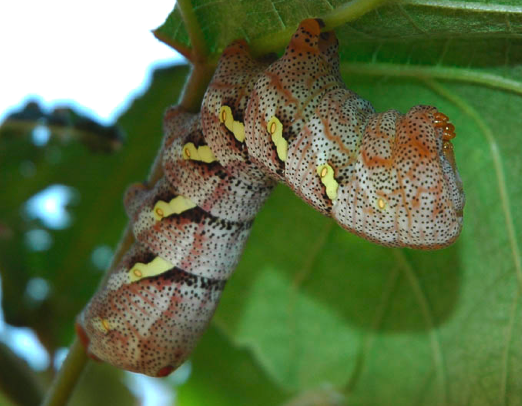
Eumorpha
typhon,
Silver City (Grant County), New Mexico,
feeding on grape foliage,
courtesy of David Morehead via Sylvie Post
copyright.
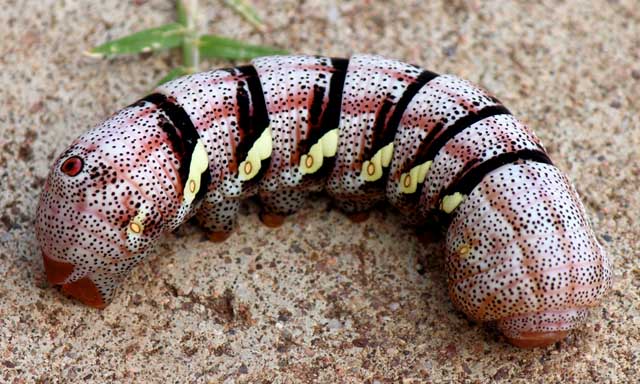
Eumorpha typhon fifth instar, Canelo, Santa Cruz County, Arizona,
August 27, 2012, courtesy of Bradley Risk.
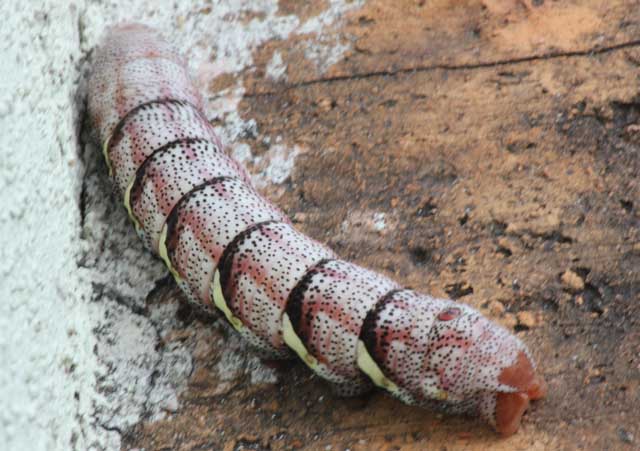
Eumorpha typhon fifth instar, San Miguel de Allende, Guanojuato, Mexico,
October 25, 2013, courtesy of David Dick.
Eumorpha typhon larvae feed upon grape species.
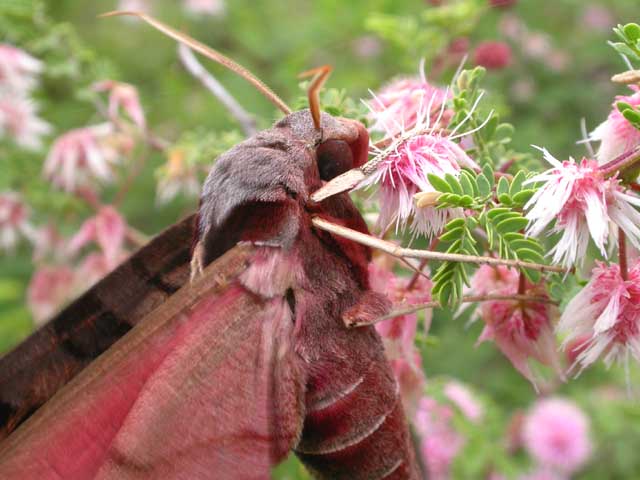
Eumorpha typhon,
Jalisco, Mexico, July 2003, courtesy of Jean Haxaire
copyright.
ECLOSION, SCENTING AND MATING:
Pupae wiggle to surface just prior to eclosion. Females call at night,
and males fly into the wind to pick up and track the pheromone plume.
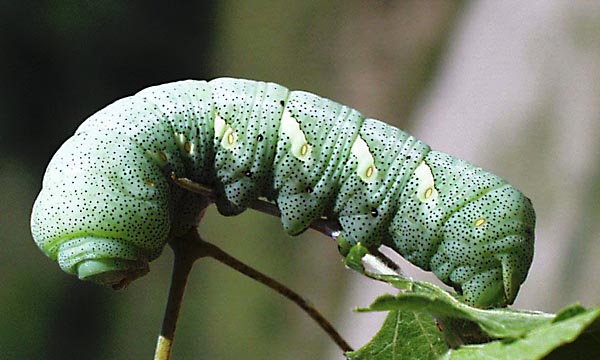
Eumorpha typhon larva courtesy of Bruce Walsh.
EGGS, LARVAE AND PUPAE:
Larvae occur in
both green and a darker brown form. The head and some thoracic
segments are often retracted when the larva is disturbed.
Pupation is in a rather shallow subterranean burrow. |
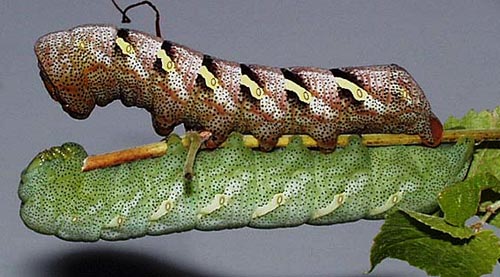 |
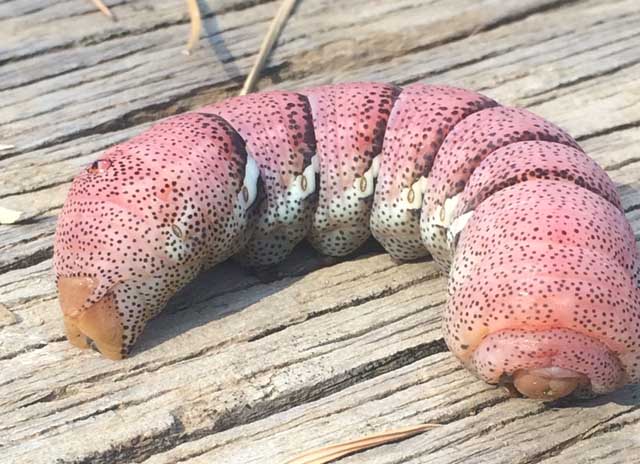
Eumorpha typhon fifth instar, Prescott, Yavapai County, Arizona,
September 2, 2017, courtesy of Leo Bacon.
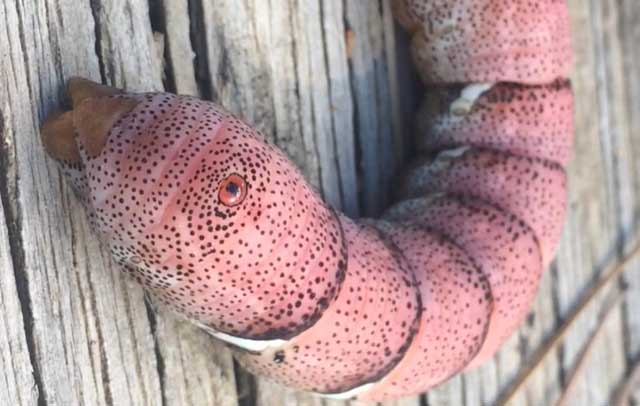
Eumorpha typhon fifth instar, Prescott, Yavapai County, Arizona,
September 2, 2017, courtesy of Leo Bacon.
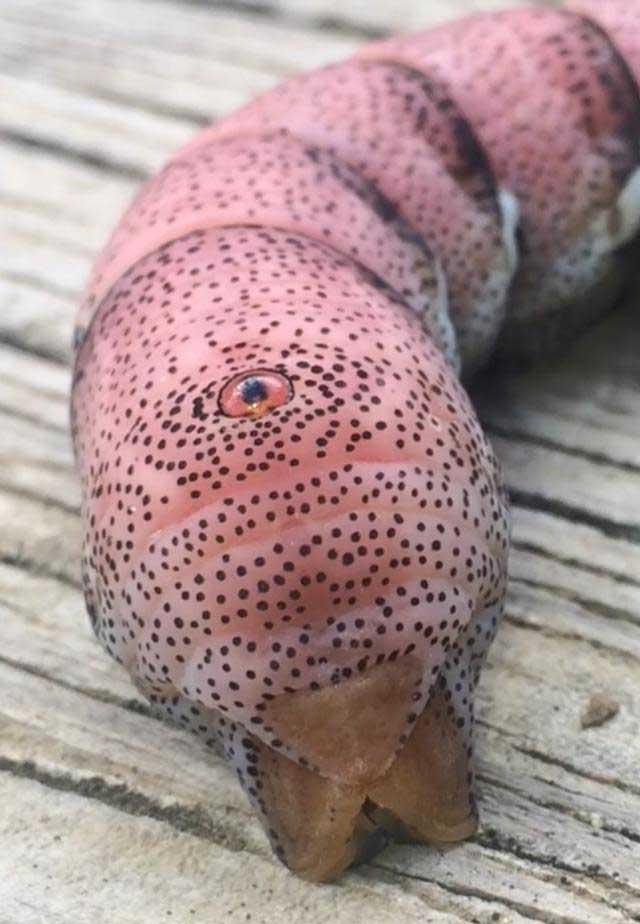
Eumorpha typhon fifth instar, Prescott, Yavapai County, Arizona,
September 2, 2017, courtesy of Leo Bacon.
My first impression of the larva above, before I was aware of its location, was Eumorpha achemon, and that is still a possibility. However,
Eumorpha typhon is also known from Arizona, and it tends to have the dark black speckling and dark abdominal banding, absent in achemon, between abdominal
segments. The white to creamy coloured, oblique, abdominal stripes/bands seem to be more distinctly traced with a fine grey outline and are more irregular in
achemon, while those same bands in typhon lack the tracing, especially below the spiracles and seem to be a bit more regular and thicker.
Larval Food Plants
Listed below are primary food plant(s) and alternate food plants. It is hoped that this
alphabetical listing followed by the common name of the foodplant will
prove useful. The list is not exhaustive. Experimenting with closely
related foodplants is worthwhile.
Return to U. S. A. Table
Return to Philampelini Index
Return to Sphingidae Index












